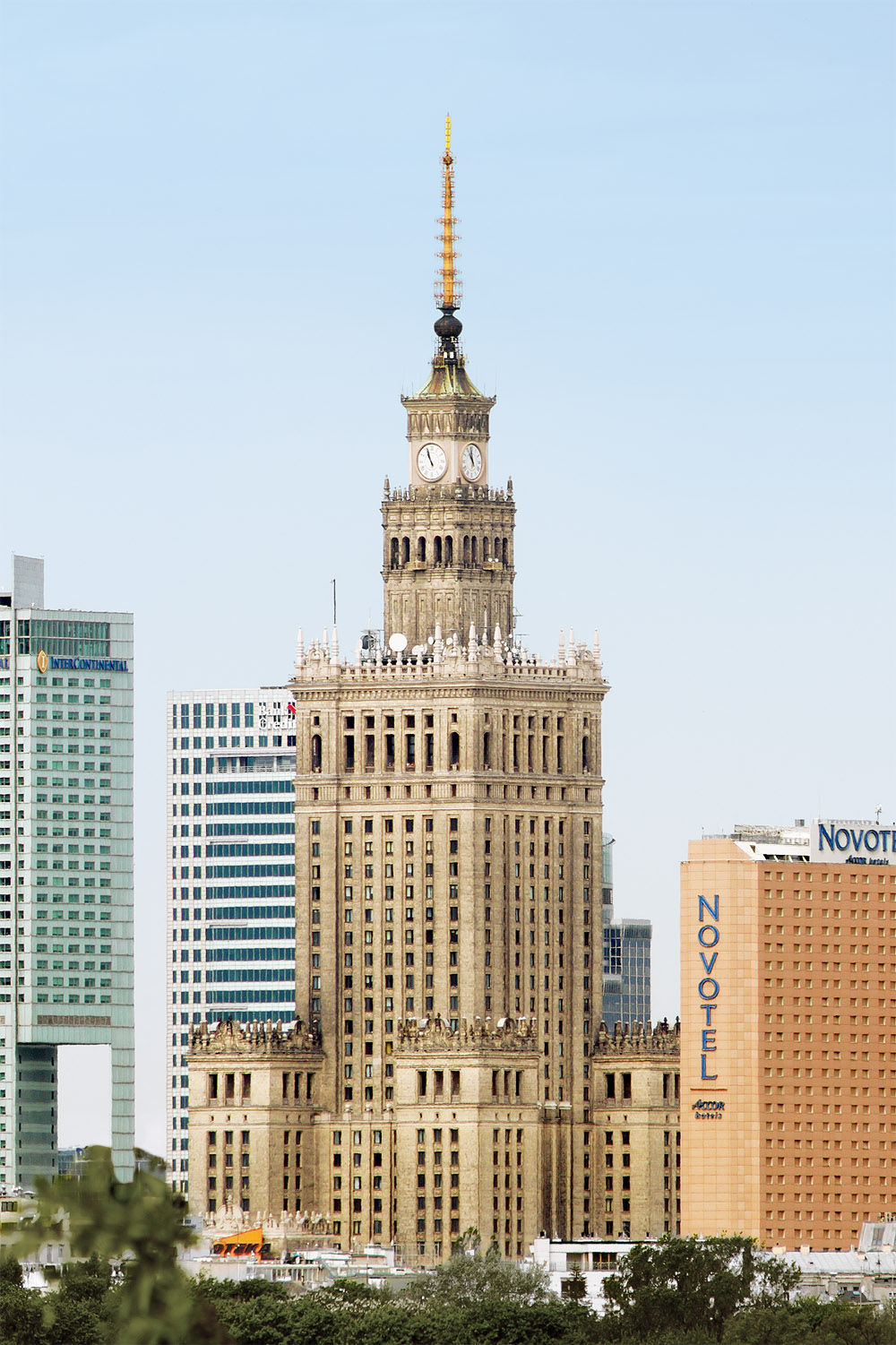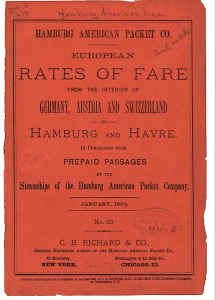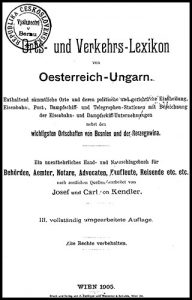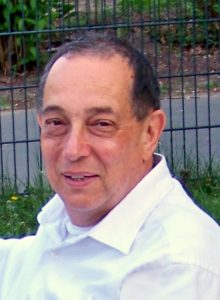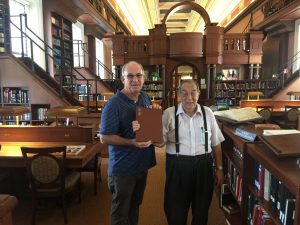YIVO (Yiddish: ייִוואָ), established in 1925 in Wilno, Poland (now Vilnius, Lithuania) as the Yidisher Visnshaftlekher Institut (Yiddish: ייִדישער װיסנשאַפֿטלעכער אינסטיטוט, Yiddish Scientific Institute[1]), is an organization that preserves, studies, and teaches the cultural history of Jewish life throughout Eastern Europe, Germany and Russia, as well as orthography, lexicography, and other studies related to the Yiddish language. (The word yidisher means both “Yiddish” and “Jewish”.) The English name of the organization was changed to the Institute for Jewish Research subsequent to its relocation to New York City, although it is still primarily known by its Yiddish acronym. YIVO is now a member of the Center for Jewish History.
Activities
YIVO preserves manuscripts, rare books, and diaries, and other Yiddish sources. The YIVO Library in New York contains over 385,000 volumes[1] dating from as early as the 16th century.[2][3] The YIVO Archives holds over 24,000,000 documents, photographs, recordings, posters, films, and other artifacts.[1] Together, they comprise the world’s largest collection of materials related to the history and culture of Central and East European Jewry and the American Jewish immigrant experience.[1] The Archives and Library collections also hold many works in twelve major languages,[4] including English, French, German, Hebrew, Russian, Polish, and Ladino .[4]
YIVO also functions as a publisher of Yiddish-language books and of periodicals including YIVO Bleter[5] (founded 1931), Yedies Fun YIVO (founded 1929), and Yidishe Shprakh(founded 1941). It is also responsible for such English-language publications as the YIVO Annual of Jewish Social Studies (founded 1946).
History
YIVO was initially proposed by Yiddish linguist and writer Nochum Shtif (1879–1933). He characterized his advocacy of Yiddish as “realistic” Jewishnationalism, contrasted to the “visionary” Hebraists and the “self-hating” assimilationists who adopted Russian or Polish. Other key founders included philologist and theater director Max Weinreich (1894–1969) and historian Elias Tcherikover (1881–1943).[6]
Founded at a Berlin conference in 1925, but headquartered in Wilno – a city then in Eastern Poland with a large Jewish population – the early YIVO also had branches in Berlin, Warsaw and New York City. Over the next decade, smaller groups arose in many of the other countries with Ashkenazic Jewish populations.
In YIVO’s first decades, Tcherikover headed the historical research section, which also included Shimon Dubnow, Saul M. Ginsburg, Abraham Menes, and Jacob Shatzky; Leibush Lehrer (1887–1964) headed a section including psychologists and educators Abraham Golomb, H. S. Kasdan, and A. A. Roback; Jacob Lestschinsky (1876–1966) headed a section of economists and demographers Ben-Adir, Liebman Hersh, and Moshe Shalit. Weinreich’s language and literature section included Judah Leib (“J.L.”) Cahan, Alexander Harkavy, Judah A. Joffe, Selig Kalmanovitch, Shmuel Niger, Noah Prilutzky, and Zalman Reisen.[7] YIVO also collected and preserved ethnographic materials under the direction of its Ethnographic Committee.[8] In 1925, YIVO’s honorary board of trustees or “Curatorium” consisted of Simon Dubnow, Albert Einstein, Sigmund Freud, Moses Gaster, Edward Sapirand Chaim Zhitlowsky.
From 1934–1940, YIVO operated a graduate training program known as the Aspirantur. Named after Zemach Shabad, YIVO’s chairman, the program held classes and guided students in conducting original research in the field of Jewish studies. Many of the students’ projects were sociological in nature (reflecting the involvement of Max Weinreich) and gathered information on contemporary Jewish life in the Vilna region.[9]
The Nazi advance into Eastern Europe caused YIVO to move its operations to New York. A second important center established as the Fundacion IWO in Buenos Aires, Argentina.[10] All four directors of YIVO’s research sections were already in the Americas when the war broke out or were able to make their way there.[11] For their own reasons, the Nazis carried the bulk of YIVO’s archives to Berlin, where the papers survived the war intact, and eventually were moved to YIVO in New York
The Chicago YIVO Society is a third active center today .[12]
Publications
YIVO has undertaken many major scholarly publication projects, the most recent being The YIVO Encyclopedia of Jews in Eastern Europe, published in March 2008 in cooperation with Yale University Press.[13] Under the leadership of editor-in-chief Gershon David Hundert, professor of history and of Jewish Studies at McGill University in Montreal, this unprecedented reference work systematically represents the history and culture of Eastern European Jews from their first settlement in the region to the present day. More than 1,800 alphabetical entries encompass a vast range of topics including religion, folklore, politics, art, music, theater, language and literature, places, organizations, intellectual movements, and important figures. The two-volume set also features more than 1,000 illustrations and 55 maps. With original contributions from an international team of 450 distinguished scholars, the encyclopedia covers the region between Germany and the Ural Mountains, from which more than 2.5 million Jews emigrated to the United States between 1870 and 1920.
The first complete English-language edition of Max Weinreich’s classic book History of the Yiddish Language,[14] edited by Dr. Paul (Hershl) Glasser, was published in two volumes in 2008.



























































































































